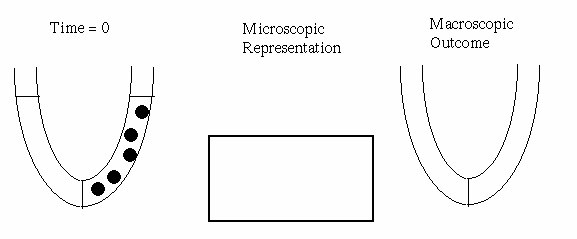
In order to begin to understand cellular structure and function, we first look at diffusion and osmosis quantitatively across an egg membrane. The transport of materials across the membrane is controlled passively by pore size and chemical structure. Then we will relate this experiment to computer-based models of membranes. Future Units will explore active transport across cells along with additional computer-based models.
If we have a container with marbles sitting at one end of the box together and shake the box so that the marbles move randomly, the net movement is that the particles move from an area of high concentration to lower concentration. This is called diffusion and can be modeled using random walks. For a review of diffusion and random walks see earlier units. More accurately, diffusion is not strictly a function of concentration, but rather a function of the change in the free energy of the particles. In the hands-on example where there are marbles in the corner all clumped together unmoving, this is a ordered, low entropy state with more free energy than a more disordered state. So, we can rephrase our generalization based on concentrations: The movement of particles of a particular substance is from regions of greater to regions of less free energy of that substance.

The egg membrane is such a semipermeable membrane which is permeable to water but not to solute (say sucrose). The movement across such a membrane is called osmosis.
| Distilled water | 10 percent sucrose | 20 percent sucrose | 30 percent sucrose | 40 percent sucrose | |
|---|---|---|---|---|---|
| T0 | |||||
| T15 | |||||
| T30 | |||||
| T45 | |||||
| T60 | |||||
| T75 |
Some questions to ponder: What can you say about the initial concentration of sucrose solution the eggs were bathed in before the experiment? Would increasing the temperature effect the rate of osmosis? What other conclusions can you draw from the graph? Do you think the eggs reached equilibrium at t=75 minutes?
Several simulations have been developed at the Polymer Center which can help students understand membranes. We build from simple models to more complex ones. A series of simulations illustrate the concept of random walks as a model for diffusion. Universal Molecular Dynamics can simulate a wide range of phenomena.